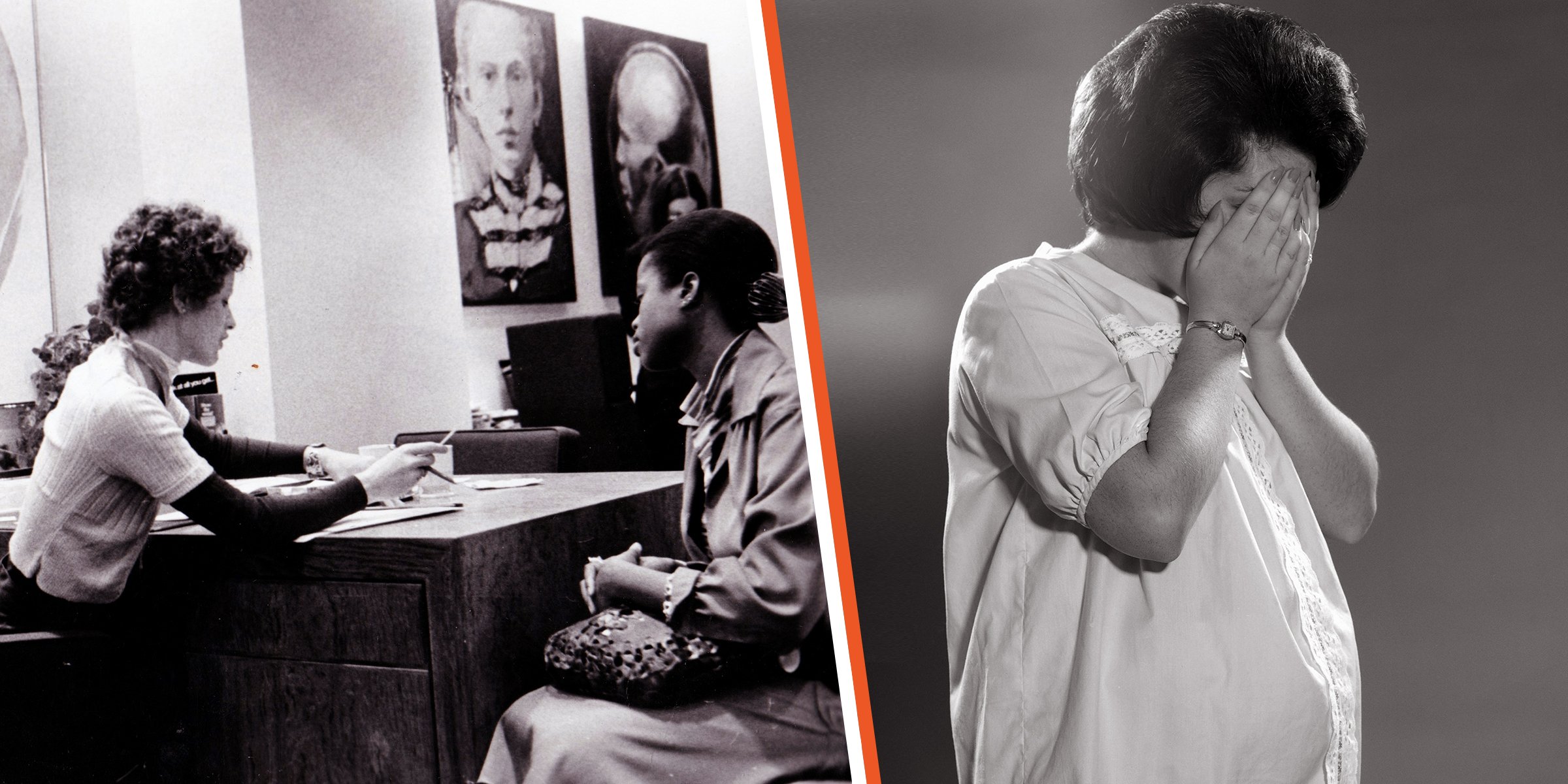
9 Things Women Weren’t Allowed to Do in the 60s in the US That Are Common Nowadays
The United States has come a long way since women couldn't do things considered normal nowadays. While women's rights and freedoms have taken a huge leap since the 1960s, it's still quite unbelievable to look back and realize there were many things that women just couldn't do at the time.
The 1960s doesn't seem so long ago, especially when you realize that many of the people we know were already grown adults by then. So it can be pretty hard to imagine how they grew up not experiencing the same kind of freedom they currently do, even if they had the means to.
There are many things that women couldn't enjoy until after the 1960s, like getting a credit card without having her husband cosign it or gaining access to birth control pills. While these are relatively "normal" activities that women can easily access nowadays, it took many years of fighting for women's rights to get to that point.
Here are nine things that women couldn't do in the United States in the 1960s and what it meant for them:
1. Get a Credit Card

A photo of a credit card | Source: Pexels
In the 1960s, US banks denied issuing credit cards to any unmarried woman. Even if they were married, most of the time, her husband was required to cosign with her.
This continued to happen until the 1970s when credit cards were only issued with a husband's signature. Regardless of whether a woman could fund a credit card with her own money, banks still denied them access to one.
Even Hillary Clinton once recalled being denied a credit card. She once received a letter saying she would have to use her husband's credit card instead. She added:
"I was making more money than he was and I actually was ready to have my own credit card."
It wasn't until the Equal Credit Opportunity Act of 1974 was implemented that it became illegal to refuse a credit card to a woman solely based on her gender. Since then, women have received the same perks and liberties as men regarding banking.
2. Take Birth Control Pills

Photo of a pregnant belly | Source: Pexels
Reproductive freedom was still a taboo topic in the 1960s, with the FDA only approving the birth control pill for "severe menstrual distress" in 1957. Although the pill was eventually approved for use as a contraceptive in 1960, it was still considered illegal in some states. It was prescribed only to married women who wanted to undergo family planning.
In Connecticut, birth control was considered illegal until 1965, when it was approved for use by married women. At the time, the pill had a bad reputation and was tagged by many groups as "immoral." It was only after a couple of years that birth control was finally approved for use by all women, regardless of whether or not they were married.
Five years after the FDA approved the birth control pill for contraceptive use, 6.5 million American women were on the pill. However, it was not until 1972 that the pill was made available to unmarried women.
3. Experience Equality in the Workplace

A woman writing on a white board in the office | Source: Pexels
In 1963, it was revealed that women only earned 59 cents for each dollar a man made in the workplace. Women were also often shunned from higher professional positions despite their capabilities, as these positions were reserved for their male counterparts.
A year later, in 1964, the Civil Rights Act went through Congress, which stated that it was illegal to discriminate based on gender and race. Despite this, many companies did not take the act seriously, so the National Organization of Women (NOW) was founded to enforce equality for women where needed.
One notable example of how the NOW made things better for women was how they ended the now-defunct airline Pan Am's rules on becoming a stewardess. Their rules imposed that flight attendants had to meet a certain height requirement, maintain a certain weight, resign if they decided to get married, maintain soft hands, and retire at 32 years old, even if they were still capable of fulfilling their roles effectively.
4. Keep their Job if Pregnant

A pregnant woman | Source: Pexels
Fifty years ago, women could be denied a job if they were pregnant. Worse, even employed women could be fired if their employer found out they were carrying–even if they were deemed fit to work.
It was only when the Pregnancy Discrimination Act of 1978 was implemented that it became illegal to discriminate against a woman employee for being pregnant. Since then, companies have been forbidden by law to discriminate based on pregnancy, whether it's to hire them, fire them, or deprive them of equal pay.
The act ensures that women who are pregnant, have gone through pregnancy, or have given birth must be treated the same for all employment-related purposes. An employer cannot refuse to employ a woman because of her pregnancy for as long as she is able to perform all major functions of the job.
5. Serve on a Jury

A photo of a gavel | Source: Pexels
Even after the 19th amendment was passed, which qualified women as "electors," having a female juror was rare. It took quite a while for states to pass legislation to have women included in jury selection.
The reason why women were kept out was that they were considered the "center of the home," which meant their responsibilities were solely related to caregiving and nothing else. They were also assumed to be too fragile to hear details of crimes and too sympathetic to remain objective.
Because of the Civil Rights Act of 1957, women were given the right to serve on juries. However, they were called to serve on a jury on rare occasions, and often only when the case involved female defendants.
It was only in 1975 that women were allowed to serve in juries in all states. While this was the case for most states, some allowed women to be on the jury as early as 1898, particularly in Utah.
6. Obtain Health Insurance at the same Monetary Rate Men

A person's holding a pen and extending a document to another person | Source: Pexels
Women were always charged more for health insurance coverage than men. This became the case until the Affordable Care Act was passed in 2010.
Many people, even elected officials, believed that "women do not mind paying a little more" for health insurance, as they often benefit from it more than men do. In the US, women, on average, spend almost twice as much as men do when it comes to health insurance.
Nowadays, women still often pay more for health insurance than men because they are considered "high risk." Health insurance companies claim that women visit the doctor more frequently, take more prescriptions during their reproductive years, live longer, and have babies, which means more visits to the hospital than the average man.
7. Get an Ivy League Education

A photo of the facade of the Harvard Law School | Source: Pexels
Before the 1960s, women were not allowed to attend Ivy League schools. Yale and Princeton didn't become coeducational until 1969, Brown and Columbia didn't offer admission to women until the early 1970s, and Columbia remained an all-male university until the early 1980s.
Although Harvard University had Radcliffe College to offer collegiate education to women, they were taught separately from men until coed classes were conducted in 1946. By the 1960s, Harvard degrees were given to Radcliffe graduates, signed by both Harvard and Radcliffe presidents, and the two universities officially merged in 1999.
While many Ivy League schools took years to accept women in their institutions, there are some exceptions. The University of Pennsylvania began accepting women on a case-to-case basis beginning in 1876, and Cornell University accepted its first female student in 1870 under special circumstances.
8. Fight in the Front Lines

A female soldier and a male soldier on duty | Source: Pexels
While women were admitted into military academies by 1976, it wasn't until 2013 that the military ban on women in combat was finally lifted. Before 1973, women were only allowed in the military as nurses or support staff.
Speaking about the very first day that women were allowed into military academies, retired Col. Debra M. Lewis said, "Of the 119 women entering that day, I suspect all of us, along with the men, can say those days were life-changing."
Two years after the Pentagon revoked the rule banning women from serving in combat units, Secretary of Defense Ashton Carter ordered that the military open all combat jobs to women with no exceptions. Only then did women get to serve on the front lines.
9. Box in the Olympics

A female boxer training | Source: Pexels
Women have proven time and time again that what men can do, they can do, too. That is also applicable in sports, where women have shown how skilled they are in many aspects and how capable they are of competing at a higher level the same way men do.
The world has seen women competing competitively in sports like tennis, basketball, and football for ages. However, when it comes to boxing, they weren't given the same opportunity to compete professionally in many countries until the 1990s.
In the boxing world, women only began gaining recognition in the 1990s when the US, Canada, and other European nations began organizing tournaments for women.
However, it was only in 2012 that Women's Boxing officially became an Olympic sport at the London 2012 Games. At the time, Sebastian Coe, chairman of the London Organizing Committee, said that the move places London 2012 in the Olympic tradition of "advancing women in sport."

A sillhouette of a woman against the sunlight | Source: Pexels
Despite women getting seats at the table and finally being recognized for more than just their gender, there are still many challenges they face in the world today. While significant strides have been made toward equality in the past 50 years, more work needs to be done.
Today, women continue to fight for the freedom to decide for their own bodies, fair maternity leave policies, and equal pay in the workplace. Although others may think it's disappointing to take this long for women to achieve these, the past shows that it's possible for women to change the course of history – and they continue to do so every single day.
Click here to read 92 women empowerment quotes from legendary women to help you reclaim your power.
